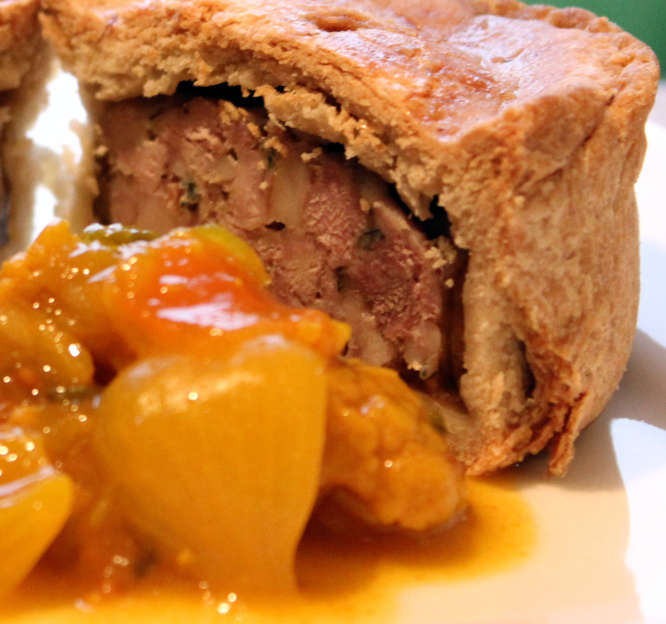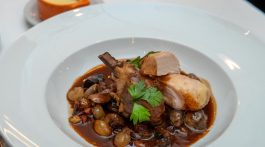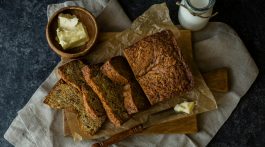Around the Counties in 47 Blog Posts – 6/47 Leicestershire.
I admit I feared the county of Leicestershire and their regional Pork Pie. My fear was based on two things. One, these bundles of [eating] joy are not necessarily a joy to make. And two, I didn’t know what to call this article!
How did I overcome my fears?
Well, to overcome my first fear, I strapped on my Don’t Mess With the Chef apron and pushed my way into the kitchen, a man on fire for a challenge. As for my second fear, in spite of the risk of being marched across Europe and into court where I’d be reprimanded for using the Protected Designation of Origin, I braved my second obstacle by sticking to my roots, er, routes (Yorkshire that is) and titled this recipe The Growler.
I haven’t a clue why this food is a Pork Pie in Leicestershire and a Growler in Yorkshire. Lest I neglect another name, I should mention that growling is induced anytime someone calls these growlers/pork pies a Melton Mowbray. As a result, I shall steer clear of that particular designation.
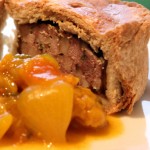 For anyone who does not know, Yorkshire does have an affiliation with the Pork Pie. This is through a group that calls themselves The Pork Pie Appreciation Society, based in The Old Bridge Inn at Ripponden. This appreciation society claims to be Yorkshire’s oldest hostelry dating back to 1307.
For anyone who does not know, Yorkshire does have an affiliation with the Pork Pie. This is through a group that calls themselves The Pork Pie Appreciation Society, based in The Old Bridge Inn at Ripponden. This appreciation society claims to be Yorkshire’s oldest hostelry dating back to 1307.
That’s given me an idea – the formation of the ‘Yorkshire Pudding Appreciation Society’ based in deepest darkest Lancashire. War of the roses springs to mind!
Getting back to the recipe, there are three primary ingredients that make up a Growler.
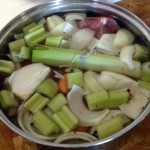 First, the jelly, which is basically vegetable stock that gets its gelatinous texture from boiling up pig trotters. It may sound terrible but it really is not that bad.
First, the jelly, which is basically vegetable stock that gets its gelatinous texture from boiling up pig trotters. It may sound terrible but it really is not that bad.
Second, the filling, which is the easy bit. This is basically pork and anything else you think will compliment the pork.
And finally, the pastry, by far the hardest part of the recipe. Get this right the first time and you’ll be making Pork Pies on the regular. Get it wrong and it’s likely you’ll never attempt them again!
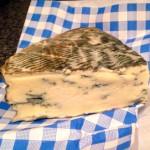
To make this Growler a little bit special I put sage, apple, and Cote Hill blue cheese in my pork mixture. The Cote Hill blue cheese I picked up from my local farm shop. The result of my special ingredients is simply spectacular so I urge you to give this a go.
The Growler – Recipe
Ingredients for the pork jelly – Inspired by The Hairy Bikers Food Tour of BRITAIN
900g pork bones
2 pig’s trotters (split down the centre – ask your butcher to do this for you!)
2 large carrots, chopped
1 onion, peeled and chopped
2 stalks of celery, chopped
1 bouquet garni (bay, thyme and parsley wrapped in a leek skin and tied together with string)
1/2 tbsp black peppercorns
Ingredients for the pie filling
400g shoulder of pork, finely chopped
130g pork belly, skin removed and minced
160g smoked bacon, finely chopped
1/2 tsp ground allspice
1/2 tsp freshly grated nutmeg
1/4 tsp garlic salt
50g Cote Hill Blue Cheese (or any blue cheese)
1 Bramley apple, peeled and diced
Salt and freshly ground black pepper, to taste
Ingredients for the pastry – Inspired By Nigel Slater recipe for Pork Pie on the Guardian website
200g lard
220g water
575g flour
1 egg, beaten
Method
- Place all of the pork jelly ingredients into a large pan and pour in enough water to just cover. Bring slowly to a boil, then reduce the heat to a simmer. Cook for three hours over low heat, skimming off any scum that rises to the surface, then strain the stock through a fine sieve and discard the solids.
- Pour the sieved stock into a clean pan and simmer over medium heat until the liquid has reduced to approximately 500ml/1 pint.
- For the pie filling, place all of the pie filling ingredients into a large bowl and mix well with your hands. Season with salt and freshly ground black pepper.
- Put the lard and water into a small saucepan and bring to a boil. Sift the flour with a good pinch of salt into a large bowl. Pour the hot lard and water into the flour, mix with a wooden spoon, then leave until cool enough to handle. The pastry must be warm when you start to work it.
- Lightly grease and flour a jam jar mould.
- Pull off a quarter of the pastry – this will be used for your lids.
- Divide the remaining pastry into six equal balls
- Place the jam jar far into the middle of the pastry ball, push down and draw the edges of the pastry up around the sides of the jar to create the pie casing. Carefully remove the jar from the pastry once your pie casing is formed.
- Roll the pork pie filling into a ball and carefully place into the bottom of the pastry case.
- Roll out the remaining piece of pastry into a circle large enough to cover the pastry case as a lid.
- Brush the top inner parts of the pastry casing with some of the beaten egg and place the pastry circle on top. Pinch the edges of the pastry to seal the pie. Brush the top of the pie with the rest of the beaten egg, then bake in the oven for 45 minutes to one hour, or until the pie is golden-brown all over.
- Remove the pie from the oven and set aside to cool.
- Cut two small holes in the top of the pork pie and pour in the pork jelly mixture (you may need to heat it through gently to loosen the mixture for pouring). Chill in the fridge until the jelly is set.
- Serve
Voila, lovely Growlers or Pork Pies, or whatever you’d like to call them. These tasty little things pack a big punch of flavour. Happy mixing, happy baking, and most of all, happy eating!
Read more articles from our ‘Around the Counties in 47 Blog Posts’ series









